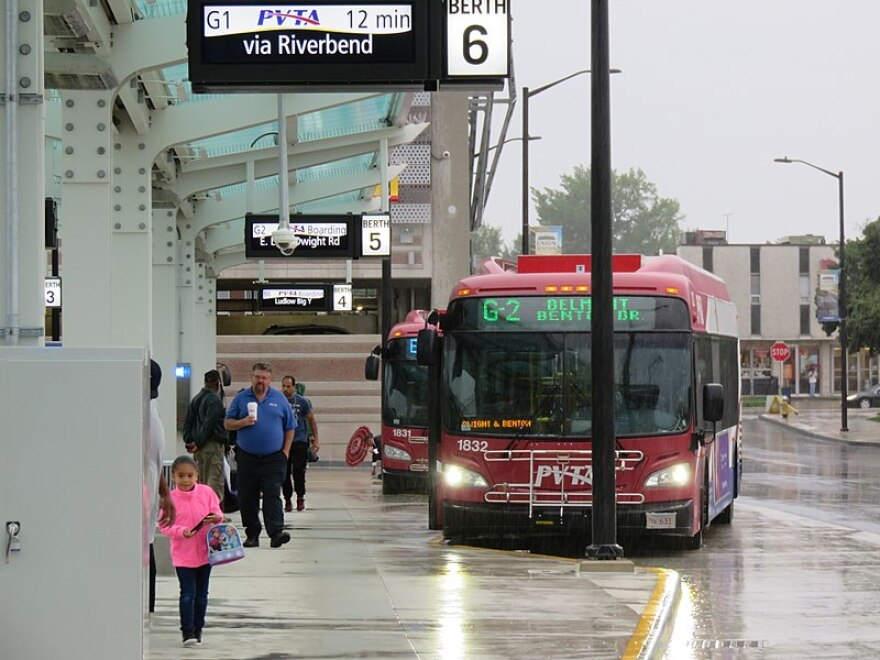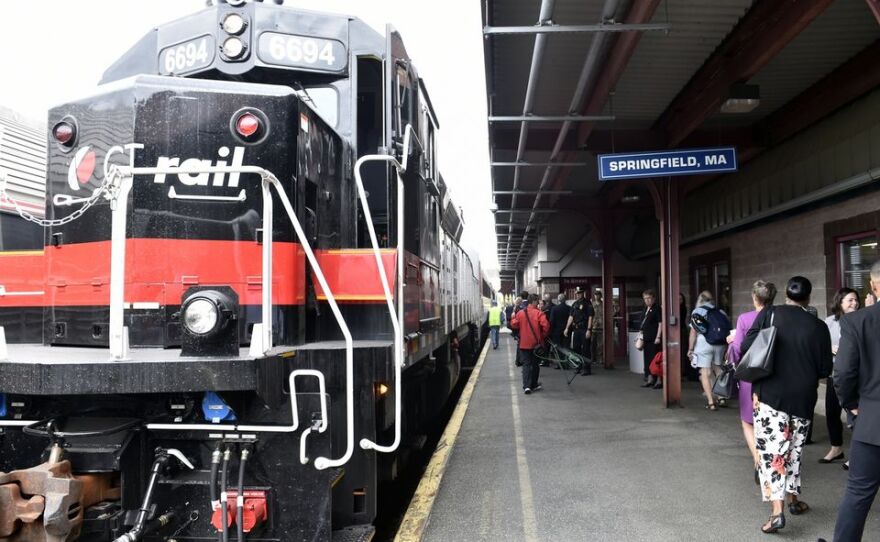If you don’t have a car, getting around in western Massachusetts and Connecticut can be tricky. More trains now carry daily passengers between Springfield and Connecticut cities. But the Pioneer Valley Transit Authority is raising bus fares and threatening service cuts. There's a cycle to this: Low ridership can mean weak economic investment near transit stations. And that means even fewer people ride.
The new study examines this thin four so-called "gateway cities" in Massachusetts: Springfield, Worcester, Lynn and Fitchburg. Ben Forman with MassINC helped to lead the study.
Kari Njiiri, NEPR: As a reminder, define "gateway cities," and why you examined these four cities.
Ben Forman, MassINC: When we have an urban center in Massachusetts, it's generally because in industrial days, there were factories there. And they've kind of retained the urban form, and they've moved to other industries, and they're still really important to regional economies, because now they have the hospitals, and the colleges, and a lot of the infrastructure that allows the region to grow.
We call them "gateway cities" in part because they've always been magnets for immigrants and newcomers to our commonwealth. But they are also gateways to economic activity and in trade in these regional economies around the state.
Your study basically says that these transit station areas can accommodate a lot more development.
Yeah. We looked specifically at Springfield in your region. Within a half-mile of Union Station, there's room for about 16,000 jobs and 16,000 residents. There actually are quite a few people working in that area today, but very few people living there.
And so on all that -- whether it's land that has no structure on it currently, or unfortunately, there's a lot of structures in that area now, but they've been vacant for some time. If we utilize that at its full potential, there's a significant amount of economic activity we could breathe into those areas.

What are the major strengths and weaknesses you're seeing, particularly in regards to Springfield?
Obviously, there's a lot of energy around the downtown and the activity that the casino will bring. There is the new service and the new station. There continues to be strong interest in living in walkable urban places, and working in them, as well. And so I think Springfield has a chance to capture those trends -- draw investment into the city's downtown, which hasn't seen a lot of investment for decades, really, increase its tax base, improve its services. I think if [Springfield is] strategic about taking advantage of these positive trends and opportunities, there's a lot of good that could come from it.
Yet still most of western Massachusetts public transportation relies very much on the bus. Any gleanings related to bus transit and potential economic development?
Absolutely. When you think about that station, you have to think about how it's served by feeder buses, how people get from neighborhoods to the downtown station. You have to think about how they could walk or bike there. That's a big part of a successful transit-oriented development district. If you want people to be working near a station and living near a station, you have to have good mobility around that area.

If there are roads that are difficult to cross, intersections that feel uncomfortable, people aren't going to want to be on the street. And that just makes them more reluctant to pay the fares, and take the train, and see that as a viable mode for commuting. So thinking about the regional transit agencies, and how they fit into the picture, as well as the streets, and other forms of mobility, are really important to having a comprehensive approach.
These four cities -- Springfield, Worcester, Lynn and Fitchburg -- they're really serving as a model for all "gateway cities." There are about a dozen?
Yeah. We couldn't look at all of those carefully, so we looked at these four because they're kind of a diverse group of "gateway cities." And then what we learned from them, we based all of the other findings off of that. We could apply [the findings] to the other cities to get a sense of what their potential was.
We really wanted to understand how much of the state's growth could be accommodated in these locations that already exist, and already have transit service, and what would that mean, in terms of reducing greenhouse gas emissions, in terms of generating additional revenue for transportation agencies that really need every dime they can get, and what kinds of development do we need to see.
In some of our cities, there's lots of people living near their stations, but very few people working there. The other cities, you have a lot of jobs, but not a lot of residents, and it's really important to get that balance right. And Springfield is fortunate that it's really the residential side, because it's much easier to do residential development than it is to do commercial development.
Heather Brandon contributed to this report.









